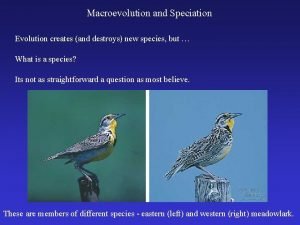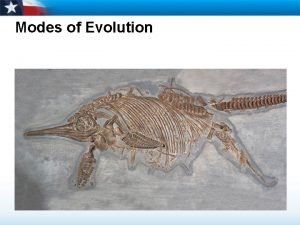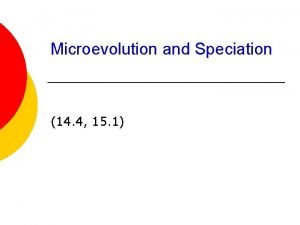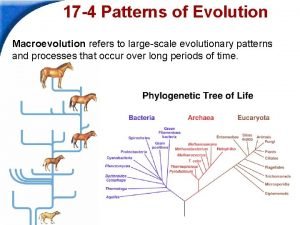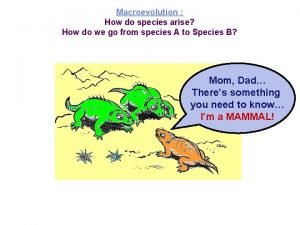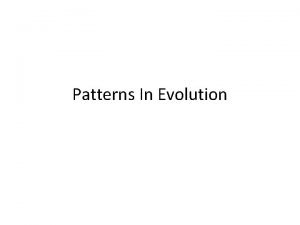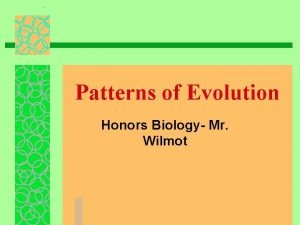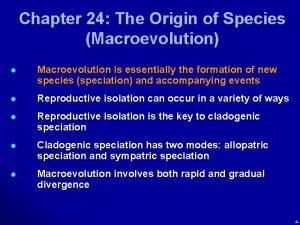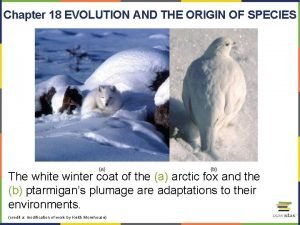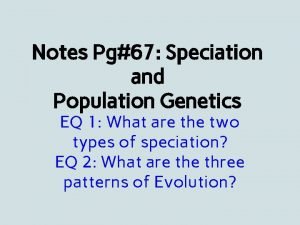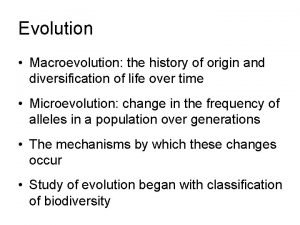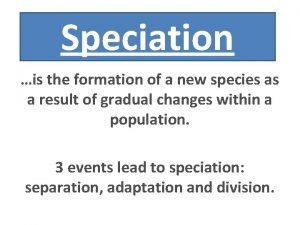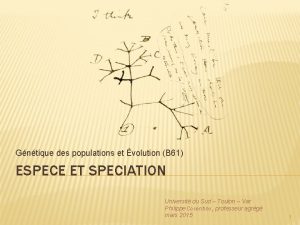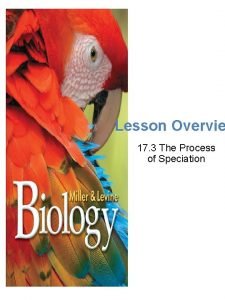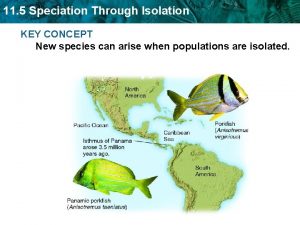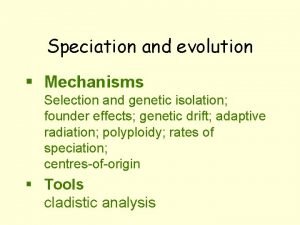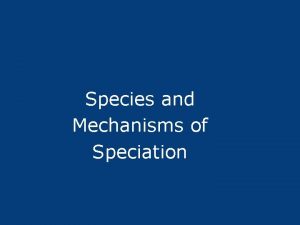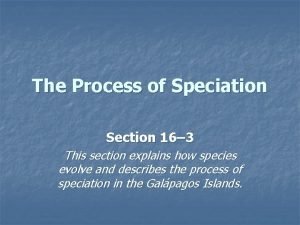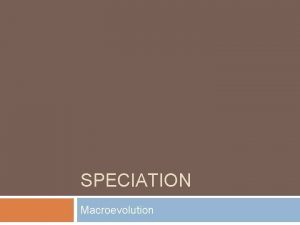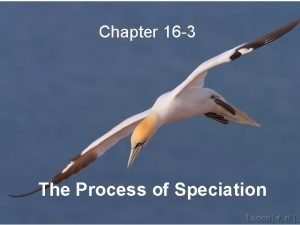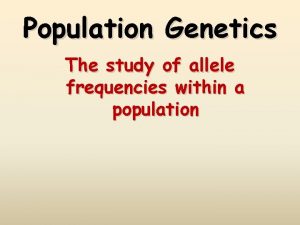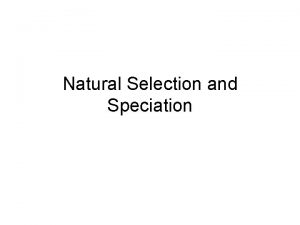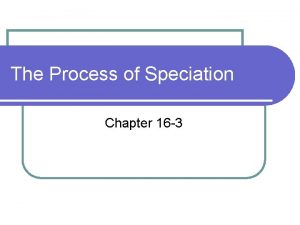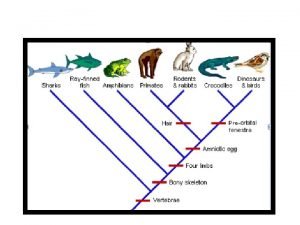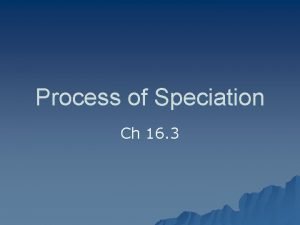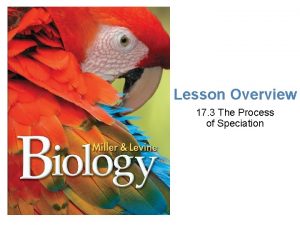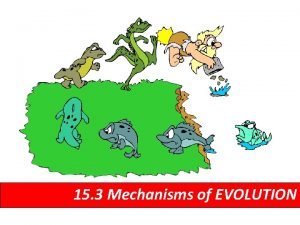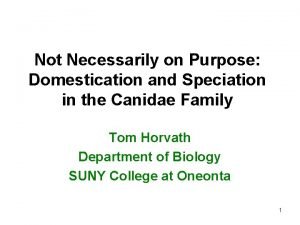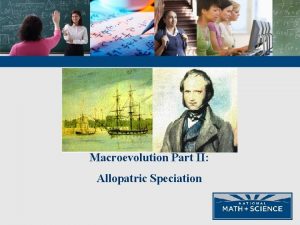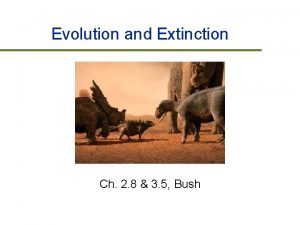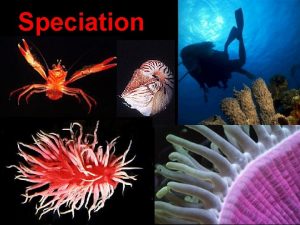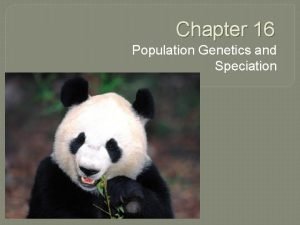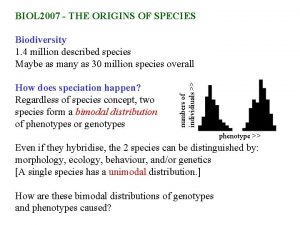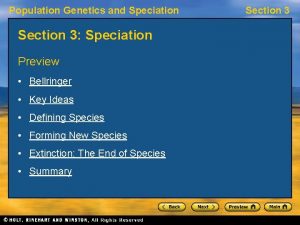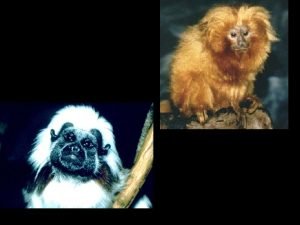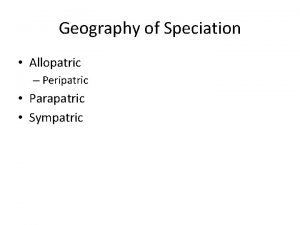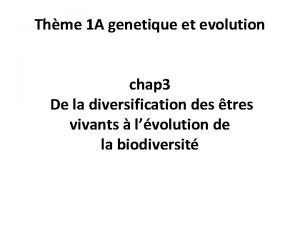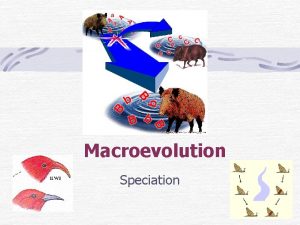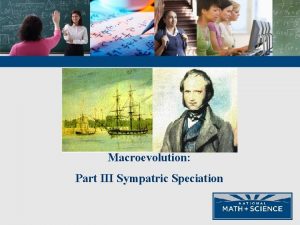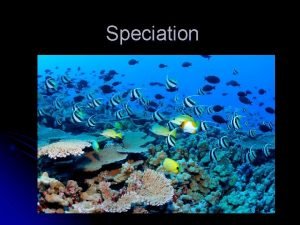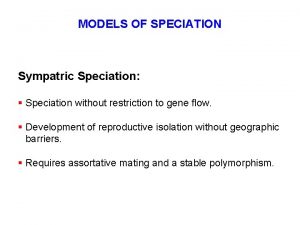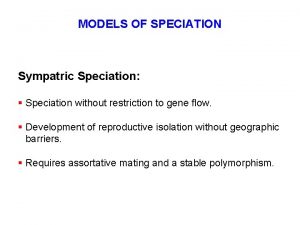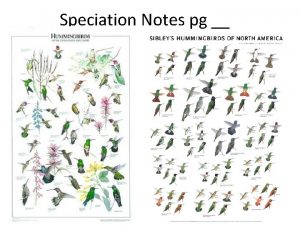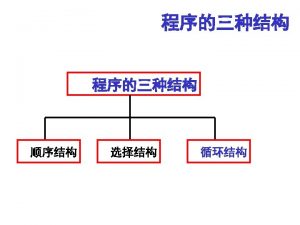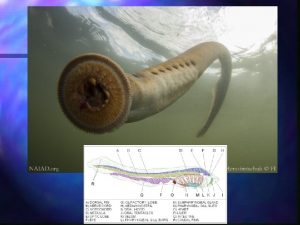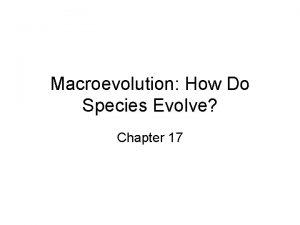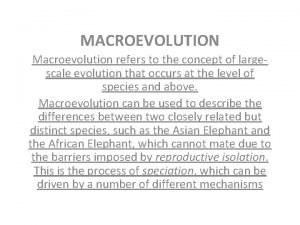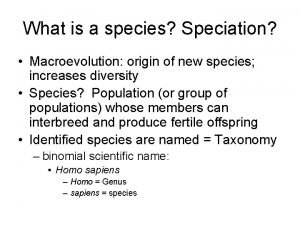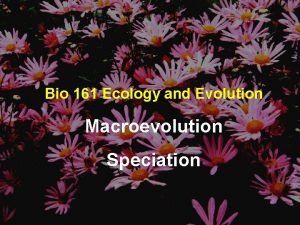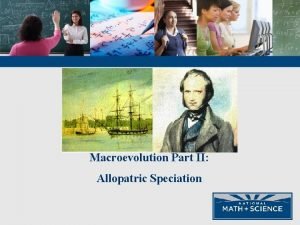Macroevolution Macroevolution The result of repeated speciation events












































- Slides: 44

Macroevolution • Macroevolution – The result of repeated speciation events • Speciation: the formation of new and distinct species in the course of evolution. – Evidences • From Comparative Anatomy • From the Fossil Record • From Biochemistry • From Biogeography

Comparative Anatomy • Macroevolution evidences from the field of comparative anatomy – Congruence of anatomical features – Vestigial structures – Homology – Living intermediates – Von Baer’s Law

Congruence of Anatomic Features • Congruence of anatomical features – Shared features of 2 species which are derived from common ancestry should be numerous. – If two species are not from a shared ancestry then there is no particular reason for them to share an abundance of anatomical features.

Vestigial Structures Anatomical features which serve no function, or are more of a liability than a help. Thought to be passed down from an ancestor in which the feature served a beneficial purpose. Examples – whale hipbones, eyes of blind cavefish, ear moving muscles of humans

Whale hipbones

Ear Moving Muscle of Humans

Homologous Structures Anatomical features which have the same developmental origin, but have a variety of developmental outcomes. Example – The limb bud of the vertebrate becomes bird wing, bat wing, whale flipper, horse leg, and human arm.

Homologous Structures

Living Intermediates Living intermediates Any species or taxon which has anatomical features that are considered similar to an ancestral group linking two dissimilar taxa. Examples – Hemichordates have features linking echinoderms and chordates. Peripatus has features linking annelids and arthropods.

Echinoderms

Chordates

Hemichordates

Hemichordates • The most distinguishing characteristic of the Hemichordate s is a more primitive form of notochord, called a stomochord that contained a nerve system.



Peripatus Onychophorans were once seen as the missing link between annelids (segmented worms) and arthropods (insects, spiders, crustacea). Like the annelids, they have a hydrostatic 'skeleton' – a fluid-filled core surrounded by muscle – instead of a hard exoskeleton like arthropods or a bony skeleton like vertebrates.

Von Baer’s Law features common to all members of major phylogenetic group of animals develop earlier in ontogeny than do features that distinguish subdivisions of the group • Things in common appear first and then things that are different appear

Von Baer’s Law

Paleontology • Evidences for macroevolution from the field of paleontology – Confirmation of fossil age • Strata sequence • Isotope dating • Index fossils – Missing links

Concept of superposition

Fossil Succession

Volcanic events and dating rocks


Index fossils – rock beds with similar fossils are assumed to be approximately from the same age. If the age of one bed is known the matching beds are assigned the same age until proven otherwise.

Missing links are extinct forms that share features from two separate phylogenetic lines.

Biochemistry • Evidences for macroevolution from the field of biochemistry – Proteins • immunotaxonomy • electrophoresis • amino acid sequence – DNA • DNA – DNA hybridization • nucleic acid sequence

Biogeography • Evidence for macroevolution from the field of biogeography – Continental drift and phylogenetic lines – Taxa and their geographic radiations – Islands, refugia and speciation • Refugia: an area in which a population of organisms can survive through a period of unfavorable conditions, especially glaciation.

Continental Separations • Continental Separations – Pangea (triassic, 220 my) – Laurasia – Gondwana (jurassic, 160 my) – N. America, Europe, Asia, S. America, Antarctica, Australia, Africa, India (cretaceaous, 100 my) New Land Bridges – Berringea, De. Geer/Thule passages, panamanian connection, Middle Eastern












• Radiation of Taxa – Regions of endemism may show a greater variety of taxon subgroups via repeated speciation events. – Regions more distant from an endemic center often have fewer taxon subgroups present.

• Islands, refugia and speciation – Fragmented populations, located in refugia of suitable habitat or on islands, speciate and form recognizable subgroups.


Pangea Map Poster • Cut out the Pangea maps and glue them together (remember there will be 2 maps) • Define Macroevolution in your own words • Research which organisms match the bands on either map (5 organisms) – Why do these patterns exist? – How do these patterns support macroevolution? – The poster will be out of 16 marks

Pangea Map Poster Criteria /8 /2 /4 /2 /16
 Antelope squirrel allopatric speciation
Antelope squirrel allopatric speciation Macroevolution definition
Macroevolution definition New concept chapter 19
New concept chapter 19 Macroevolution vs microevolution
Macroevolution vs microevolution Connecting the concepts macroevolution
Connecting the concepts macroevolution Connecting the concepts: macroevolution
Connecting the concepts: macroevolution What are the two major patterns of evolution?
What are the two major patterns of evolution? Macroevolution 7 patterns
Macroevolution 7 patterns Hybrid breakdown example
Hybrid breakdown example Mutually exclusive vs non mutually exclusive
Mutually exclusive vs non mutually exclusive The origin of species 18
The origin of species 18 Genetic drift in small populations
Genetic drift in small populations Huahaca
Huahaca Speciation, or the formation of new species, is
Speciation, or the formation of new species, is Sympatric speciation
Sympatric speciation Scala naturae
Scala naturae Process of speciation
Process of speciation Reproductive isolation
Reproductive isolation Speciation
Speciation Speciation definition biology
Speciation definition biology Section 16–3 the process of speciation
Section 16–3 the process of speciation Speciation process
Speciation process Section 16–3 the process of speciation
Section 16–3 the process of speciation Genetics
Genetics Speciation
Speciation Parallele evolution
Parallele evolution Allopatric speciation example
Allopatric speciation example Section 16-3 the process of speciation
Section 16-3 the process of speciation Example of parapatric speciation
Example of parapatric speciation Speciation
Speciation Section 16–3 the process of speciation (pages 404–410)
Section 16–3 the process of speciation (pages 404–410) Speciation process
Speciation process Biological species concept
Biological species concept Sympatric speciation example
Sympatric speciation example Cladogram for dogs
Cladogram for dogs Example of a postzygotic barrier
Example of a postzygotic barrier The sixth extinction chapter 3 summary
The sixth extinction chapter 3 summary Speciation scenarios reinforcement answer key
Speciation scenarios reinforcement answer key Population genetics and speciation worksheet answer key
Population genetics and speciation worksheet answer key Sympatric speciation
Sympatric speciation Ecological speciation
Ecological speciation Modes of speciation ppt
Modes of speciation ppt Taxonomic species concept
Taxonomic species concept Parapatric speciation
Parapatric speciation Ecureuil antilope grand canyon
Ecureuil antilope grand canyon
